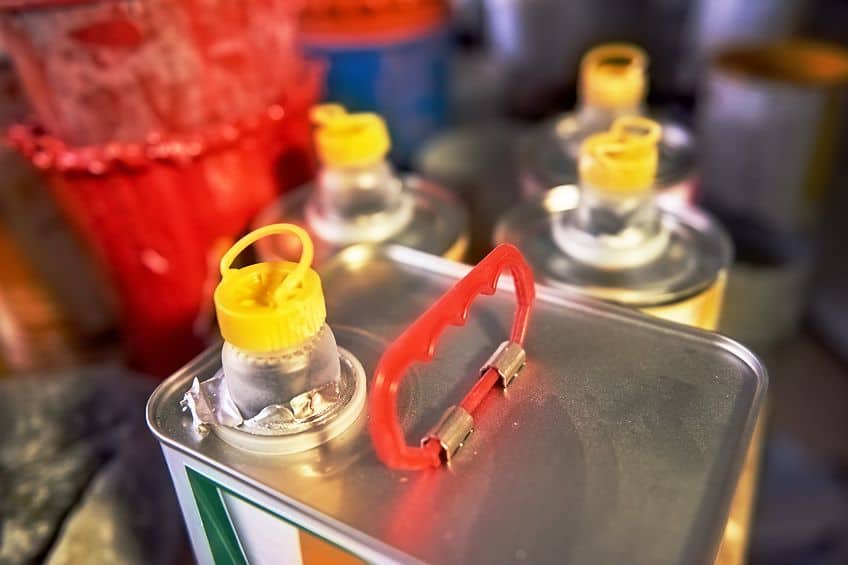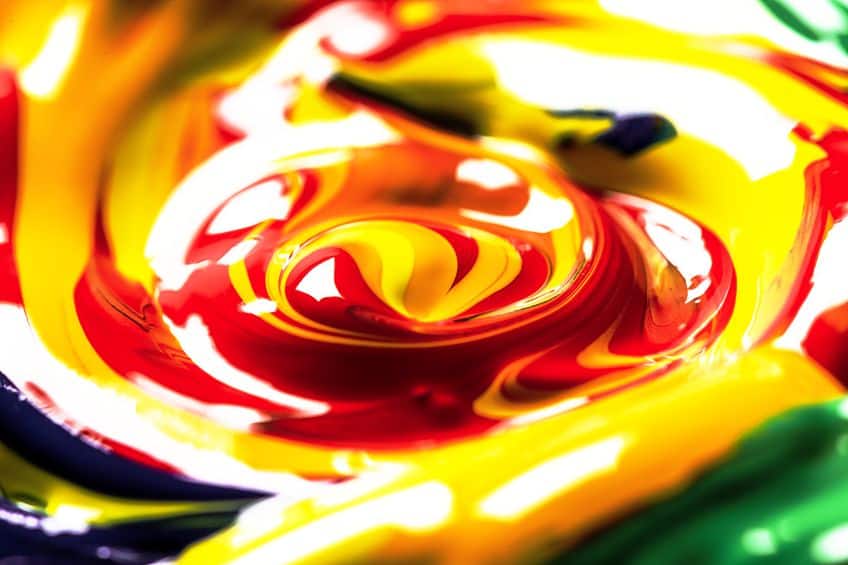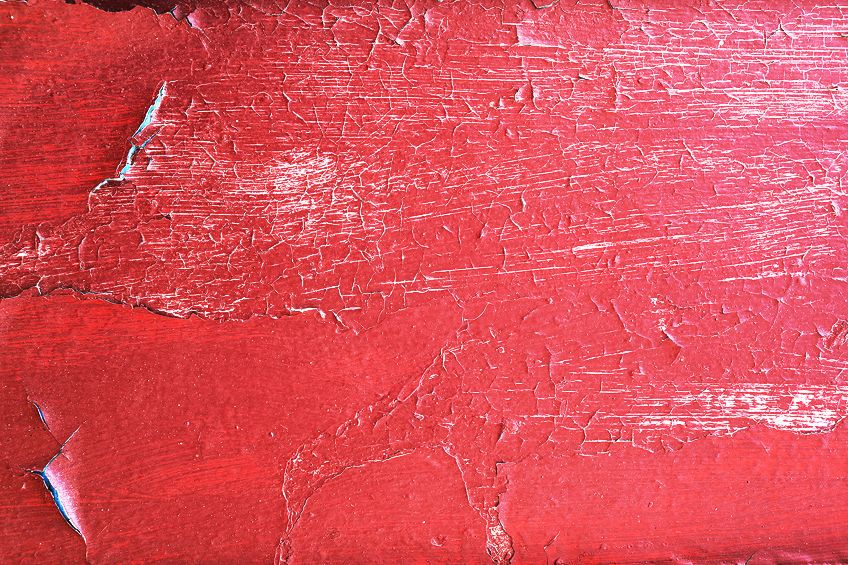Oil Painting Solvent – Get Familiar With Oil Painting Solvents
Whether you are a beginner in using oil paints, or a professional artist, you need to know all about oil painting solvents. However, like so many other products, there is a large selection available. In this article, we hope to help you make that decision so you can choose the oil painting solvent that suits your needs best.
Table of Contents
Types of Solvents
Solvents, when added to your oil paints, will temporarily change how the paints work. They are also made to evaporate completely when the oil paint dries. What solvent is used to clean oil paintings? Solvents are used as paint thinner for oil paints, making them easier to paint with, and they are also used to clean your palette and brushes as well as your working space. Let us now have a look at different types of solvents.
Mineral Spirits
Mineral spirits are called by several different names. In the United States and Canada, it is referred to as mineral spirits, in Australia and New Zealand they call it mineral turpentine. Other names that are given to this product are turpentine substitute, paint thinner for oil paints, and petroleum spirits. So, if you find a solvent that has the word mineral in it, then it is most likely mineral or white spirits.Mineral spirits are petroleum-based products that have a moderate evaporation rate and are used to thin your oil paints and clean brushes and palettes.
Avoid using household mineral spirits as they contain impurities, and rather use artist white spirits that are free from impurities like sulfur and will not damage your oil painting.
Oil painting with mineral spirits is ideal but should be used only on the upper layers, to adhere to the fat-over-lean principle. When oil painting with mineral spirits, be careful not to use too much or you could end up with under bound paint that is unable to adhere to the canvas. This means that the balance between solvent and oil is incorrect, and the oil paint can become too diluted and ineffective.

However, mineral spirits do release harmful vapors and a strong smell that can cause nausea or dizziness. So, you must paint in a well-ventilated room, and it is recommended that you use a mask when handling the product. If mineral spirits come into contact with your skin, it can cause skin irritation and is recommended that you use nitrile or latex gloves when handling this product. Nitrile gloves are a lot more resistant to solvents than latex gloves.
Turpentine
Turpentine for oil paint has been the traditional solvent used by artists over the years to thin paints and clean brushes. The product is produced from the sap of conifer trees that is then distilled to separate the resin from the oil, giving you the effective solvent called turpentine. Turpentine is one of the strongest and most compatible solvents used with oil paints, as it can thin the paint effectively and leave a layer of pigment that is evenly dispersed throughout the paint. It also dries very fast and is also strong enough to dilute certain varnishes like damar resin.
However, the one drawback of turpentine is that it omits a very strong smell. These vapors are toxic, which can cause headaches and can also result in long-term health problems if not used correctly.
Turpentine can also be easily absorbed into the skin, which can result in redness, and burns and can cause dermatitis, as well as cause irritation to the eyes and lungs. Due to its very high toxicity level, it is recommended that you use it in large open spaces. Also, ensure you have good ventilation by opening the windows to allow for cross ventilation that can dispel the fumes quickly. Turpentine is also very flammable, so take extra care when using it and make sure there are no open flames nearby, and definitely no smoking.

The availability of turpentine makes it fairly cheap but be careful that you only buy the artist’s grade distilled variety. The industrial grade contains colorless impurities that appear like water. The household grade of turpentine will likely leave a residue of gum, which can prevent your paint from drying completely and can also cause the paint to yellow over time. The highest turpentine grade will leave a pleasant fragrance of pine, while the lower grade will leave a bad smell behind and can be used for cleaning your brushes.
Turpentine for oil paint can thicken if you expose it to the air for a long time, so remember to store it in air-tight containers.
Gamsol
Gamsol has been proven to be the safest paint thinner for oil painting, as it allows artists to use all their traditional painting techniques without affecting their artwork. Gamsol is a petroleum-distilled product that has all the aromatic harmful types of solvents removed from it. Also, it can be shipped as a non-hazardous product due to its low flashpoint. Gamsol is referred to as a low-odor solvent or odorless mineral spirit, where all the harmful toxic compounds have been removed from the white spirits.
This makes it a solvent that can be used by those who are affected by strong fumes.
Although gamsol is regarded as a studio-safe solvent and its toxic level is much lower than turpentine, it is still advisable to only use it in a well-ventilated space as it still contains a small amount of those harmful chemicals. To prove the safety level of gamsol, it is used in products that come into contact with the body, like hand cleaners, and cosmetics, and also for cleaning equipment that is used for the preparation and serving of foodstuffs.

The primary use of gamsol is for thinning oil colors. By adding a small amount, the stiff colors relax and are ready for use. However, if you use too much, it may cause the paint to form a paint film. Gamsol can also be used for cleaning brushes and palettes. Gamsol should not be used with paint mediums that contain natural resins as they require a stronger solvent like turpentine.
Comparison of Solvents
Oil-based paints do not mix with water, so you need to have a solvent that can thin your paint, speed up the drying time as well as clean your brushes. There are different types of paint thinner for oil painting, and some of them are more compatible than others. To make it easier for you to decide what type of solvent is best for your use, we have compiled a comparison chart below.

| Solvent Properties | Mineral Spirits | Turpentine | Gamsol |
| Drying time | 30 hours | 24 hours | 24 hours |
| Viscosity | High | High | Low |
| Toxicity | Moderately toxic | Highly toxic | Non-toxic |
| Transparency | Durable, even finish, used for glazing | Durable, even finish, used for glazing | Durable, even finish, used for glazing |
| Flash point | Highly flammable | Highly flammable | Highly flammable |
| Cost | More expensive than turpentine | Cheapest price | More expensive than turpentine |
Safety Measures When Using Solvents
When using solvents for creating a wash to tone the canvas, thinning your oil paints, or cleaning your brushes, many artists have an issue concerning safety. Apart from water, there are no completely safe solvents available. However, some are a lot safer than others to use.
Proper Ventilation
Most solvents emit toxic fumes that can cause headaches, dizziness, and nausea, like turpentine and mineral spirits. Even though Gamsol is non-toxic, it still produces some fumes. If you are affected by these toxic fumes, but still want to use an effective solvent, then the answer is to work in a well-ventilated space. This means that you need to open as many windows and doors as possible, allowing a crosswind to flow into your workspace. In certain conditions,
It is also necessary to have fans blowing to direct the fumes out of the room, leaving you with cleaner air to breathe.
Wear Gloves and Protective Clothing
It is not only the odor of the solvents that can cause harm, but you also need to ensure that the solvent does not come into contact with your skin as it can cause skin irritation. For this reason, wearing gloves is very important. Nitrile or latex gloves can be used, but nitrile gloves are the best option. Your eyes also need protection from the solvents as they could cause permanent damage and even loss of sight.
The use of safety goggles is vital whenever you are handling solvents to protect your eyes, as well as protective clothing like overalls to protect your body.

Storing of Solvents
All solvents need to be treated with respect as they can cause harmful damage, so it is important to store your solvents in a safe place. Proper and correct storage of solvents can safeguard you and your family’s health, as well as protect the environment. Let us now consider how to store your solvents.
- Label all your solvents clearly, marking them as flammable, or toxic, along with the date.
- Store them in properly ventilated cabinets that are fire-resistant and not near any heat or flame sources.
- Only buy what you need to avoid stockpiling hazardous or flammable materials.
- Ensure your containers are properly sealed to avoid any evaporation or spillage.
- Do not store solvents near foodstuffs, for obvious reasons.
- If you need to transport the solvents, make sure they are in strong containers to avoid any spillage.
- Ensure that all containers are out of reach of children and animals.
Disposing of Solvents
In the United States, the EPA (Environmental Protection Agency) is very strict when it comes to disposing of any organic solvents. Do not pour down the drain, which can land in the municipal sewers. There are very strict hazardous waste disposal requirements. The containers used need to be strong and the cap tightly secured
Only non-reactive solvents, which means solvents that do not react with one another, can be placed in the same container.

The container also needs to be labeled. This is necessary as reactive chemicals can explode when coming into close contact with each other. If you have any doubts about how to dispose of your solvent, then contact your local waste management office.
Choosing the Right Solvent
For hundreds of years, oil paints have been the medium artists have used. They are made from pigment powder that is mixed with oil, producing a slow-drying medium, that allows you to blend the colors, and can be used for any style of art. So, before we talk about what type of solvent is best for your oil paints, let us first consider the types of oil paints available.
Types of Oil Paint Being Used
There are two types of oil paints available, which include artist oil paints and then student oil paints. The artist’s oil paints are of a much higher quality and more expensive as they have a higher pigment-to-oil ratio, giving you intense color saturation. The student oil paints have a lower pigment-to-oil ratio because they need a binder but can still produce some beautiful colors. Student paints have the word “hue” on the label, which means a synthetic pigment was used instead of the more expensive pigment.
There are also alkyd oil paints that have a pigment mixed with an alkyd resin, giving it a faster drying time of around four to eight hours.

They have a buttery consistency with top-level transparency, allowing you to build up the layers, and lastly, there are oil paints that can be thinned using water, they are all oil paints that work with solvents. All these different oil paints give different finishes, different drying times, and different consistencies. Thinning your oil paints with solvents will give lower viscosity, a moderate drying time, and a matte finish, using natural oils gives higher viscosity, slow drying time, and a glossy finish.
Painting Style and Techniques
We have already seen that your oil paints can be easily thinned using solvents or oils, but these two methods are not the only ways available to thin oil paints. You can accomplish the same effect with your oil paints by using painting styles and techniques that have been around for many years and have been proven to be very effective. Let us consider some of these oil painting techniques and styles.
Use Paint Straight from the Tube
Applying oil paint straight from the tube and thinning it out with a sturdy bristle brush and a palette knife. It is also easier to accomplish when done on a smooth canvas surface. This means you can thin your oil paints without the use of solvents or oils.
Fat over Lean Technique
When using any type of petroleum or oil-based paints, you need to consider the fat-over-lean technique. This means you need to ensure your top layers of paint always have a higher content of oil than the bottom layers. So, when you are thinning your oil paints with an oil medium, you need to make sure your initial layers of paint have very little additional oil added.
Always paint thick layers over thin layers as the thicker layers always contain more oil, and the thin layers can be easily glazed over the thicker layers.
Ghosting
Ghosting of your oil painting is when faded color or dull spots appear on the painting when it is drying. This is a result of the layers of paint underneath having the incorrect amount of oil, and the oil is then sucked out of the top layer to the lower layers. This can also cause your paint to crack as the top layer has insufficient oil and becomes brittle. This can be fixed by using a technique called oiling-out, where you can apply more oil on the top layer while the paint is drying.

Personal Preference
The use of solvents that emit toxic fumes is not a problem if you are sensible in the way you use them. Similar to some artists not using certain pigments which can be toxic. However, this is up to you and is subject to your situation. If you have small children, are concerned about your health, or may be pregnant, then it is advisable to refrain from using toxic pigments and most solvents.
If you suffer from headaches and nausea when using toxic solvents, then the option of non-solvents for thinning your paints is the right choice to make.
Alternatives to Solvents
There are many alternative mediums to use instead of solvents to thin your paints that are solvent and toxic-free, such as oils, natural alkyds as well as citrus-based thinners. You can also clean your brushes without solvents by using brush soap that keeps your brushes springy and in perfect condition without harmful fumes. As it is normally the initial layers that need thinning, another technique that works effectively is to start the first layer using acrylic paint but remember you cannot paint acrylic over oil. Let us consider a few of these solvent-free options for your oil paintings.
Water Soluble Oil Paints
Water soluble oil paints are real oil paints that can be mixed and cleaned using water, which makes them solvent-free. However, they are not water-based paints like acrylics or watercolors. You are also able to get rich, create textures, and accent your brush strokes just like traditional oil paints. This is a great alternative to solvents as it will provide you with vibrant colors and color depth, and it is very easy to clean up.
The paint is very versatile as you can also use linseed oil, and other solvents to mix your paints.

PROS
- Behave exactly like traditional oil paints
- Avoid irritating and harmful chemicals and fumes
- Great for people that are allergic or sensitive to solvents
- For those who want to travel or work indoors, cleaning up is easy
CONS
- They do not give you that glossy finish like oil paints
- When dry, they tend to have a slightly darker color than when wet
- Using too much can cause the paint to crack as it dries
- They still contain linseed oil, so the oil smell is still there
Oil Paint Mediums
Apart from using solvents with your oil paints, there are artist-grade and vegetable-based oils that are not toxic, as they come from plants. Oils do not produce any harmful fumes, they absorb oxygen throughout their drying process.So, if you do not suffer from any allergies, then these oil paint mediums will be an excellent substitute for solvents. Let us consider some oil paint mediums below.
Linseed Oil
Linseed oil is a principal oil that is used in most of our oil paints. It is a very stable and permanent oil that provides a good foundation for oil painting. Depending on the pigment, type of surface you are using, thickness, and air temperature, it will dry within five days. Also available is the cold-pressed linseed oil that is more refined and of better quality and will slow down the drying time of your oil paint.

PROS
- Reduces oil consistency
- Slows down the drying time of the paint
- Improves transparency
- Adds gloss to the paint finish
CONS
- May cause yellowing over time
Walnut Oil
The color of walnut oil is pale yellow-brown, and it dries much slower than linseed oil but is very resistant to cracking and yellowing. It gives you brilliant and vibrant colors and is a glossier and clearer medium for you to work with.
PROS
- Increases the paint flow
- Makes brush cleaning very easy
- Is non-toxic
- Takes much longer to dry
CONS
- Tends to leave a greasy residue
Safflower Oil
The color of safflower oil is paler than linseed oil and will not yellow over time. The drying time is much slower than linseed oil and dries evenly throughout but tends to form a top skin. This may cause it to have a slightly sticky feeling during its drying process, and for this reason, some artists prefer not to use it.
However, it has proved over the centuries to be a reliable medium that can hold up indefinitely.

PROS
- Increase the gloss of the paint
- Improves the paint flow
- Is resistant to yellowing
- Much slower drying time
CONS
- Any change in the environment may affect the structure of the paint
Poppy Oil
Poppy oil is the one oil medium that dries the slowest, which is one reason that artists who paint wet on wet prefer to work with it. However, you need to use it only in small quantities as its long-term durability has not been proven. So, if you plan to use poppy oil to layer your paints, you need to avoid using it during the initial layers.
PROS
- Improves the gloss of the paint
- Is very quick drying
- Is ideal for lighter hues
- Will not turn yellow
CONS
- Produces a very weak film
In reading this article, we hope that you have found what you were looking for. Experimenting and exploring with different oil paint mediums and solvents can help you find something you love to work with, which will make your oil painting experience much more enjoyable.
Frequently Asked Questions
Are There Alternatives to Paint Solvents?
Do you get a headache, become slightly dizzy when using solvents, or are concerned about your health? If so, there are many alternatives you can use such as water-soluble oil paints, different oil paint mediums, and odor-free solvents.
What Oil Paint Medium Is the Best?
Linseed oil, but more particularly, refined linseed oil seems to be the most popular oil painting medium used by most artists. It slows the drying time down, which is of great help, especially when painting in layers. However, it can yellow over time.
What Alternatives to Turpentine Are There?
Alternatives to turpentine can range from gamsol, which is still in itself slightly toxic, to lavender spike oil, stand oil, poppy seed oil, safflower oil, walnut oil, and much more.
What Solvent Is Used to Clean Oil Paintings?
Solvents such as mineral spirits are used to thin oil paints and clean brushes. However, the easiest way to clean oil paintings on canvas is by using a cotton wool swab soaked in soapy water. If the painting has a varnish seal, you need to use some acetone to remove the dirt.
In 2005, Charlene completed her Wellness Diplomas in Therapeutic Aromatherapy and Reflexology from the International School of Reflexology and Meridian Therapy. She worked for a company offering corporate wellness programs for a couple of years, before opening up her own therapy practice. It was in 2015 that a friend, who was a digital marketer, asked her to join her company as a content creator, and this is where she found her excitement for writing.
Since joining the content writing world, she has gained a lot of experience over the years writing on a diverse selection of topics, from beauty, health, wellness, travel, and more. Due to various circumstances, she had to close her therapy practice and is now a full-time freelance writer. Being a creative person, she could not pass up the opportunity to contribute to the Art in Context team, where is was in her element, writing about a variety of art and craft topics. Contributing articles for over three years now, her knowledge in this area has grown, and she has gotten to explore her creativity and improve her research and writing skills.
Charlene Lewis has been working for artincontext.org since the relaunch in 2020. She is an experienced writer and mainly focuses on the topics of color theory, painting and drawing.
Learn more about Charlene Lewis and the Art in Context Team.









